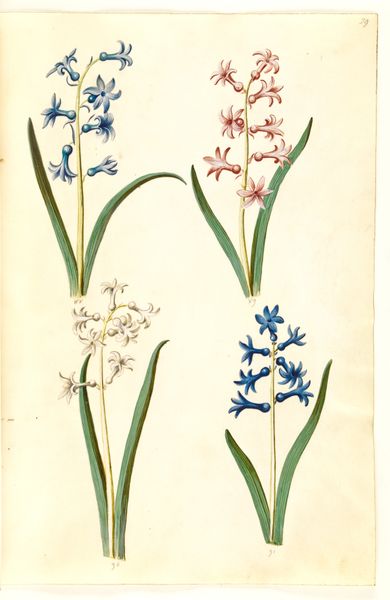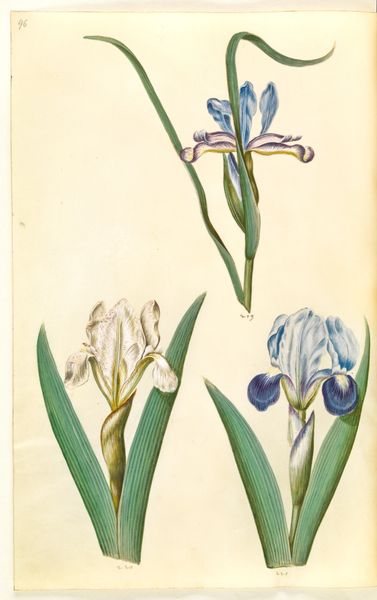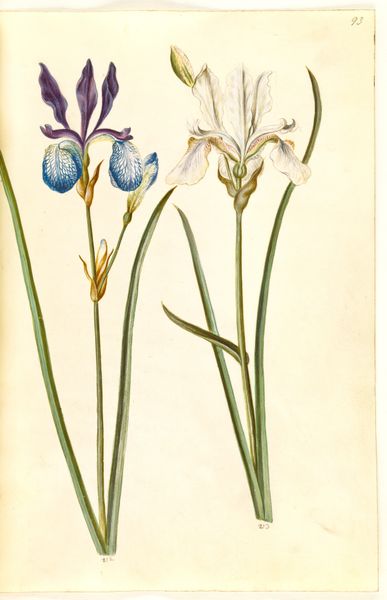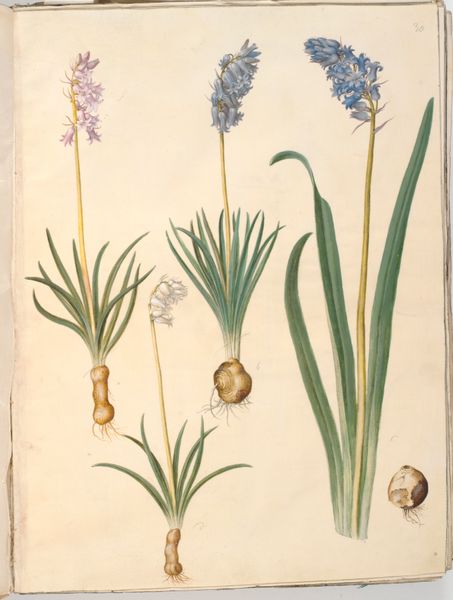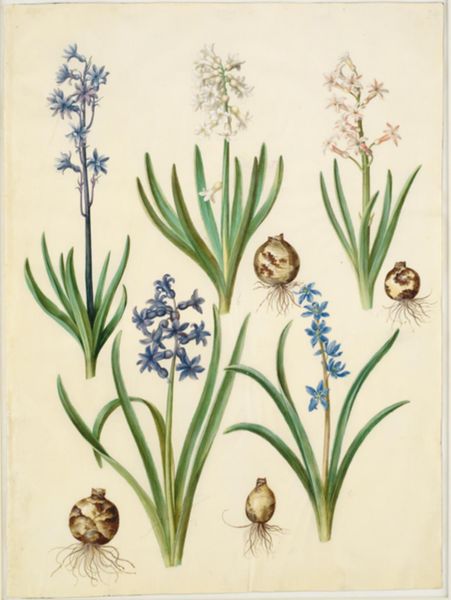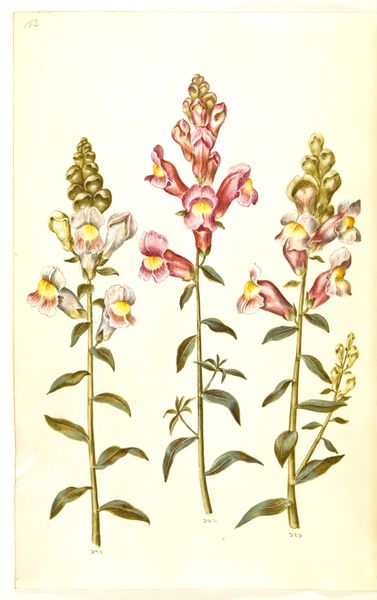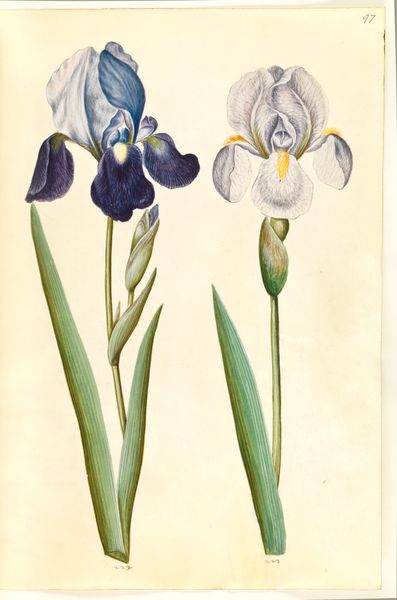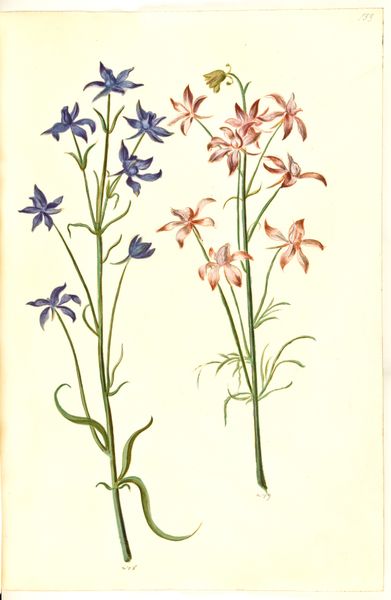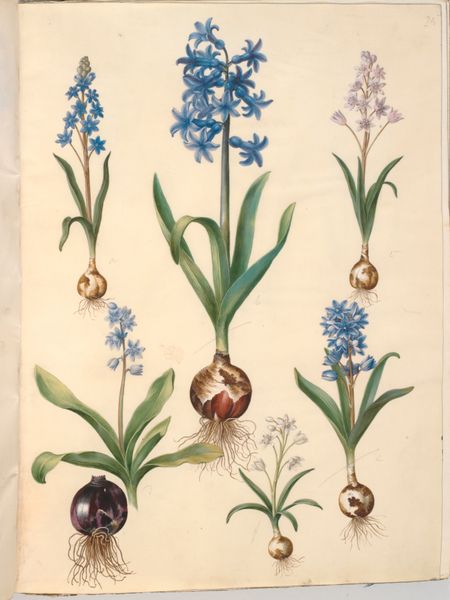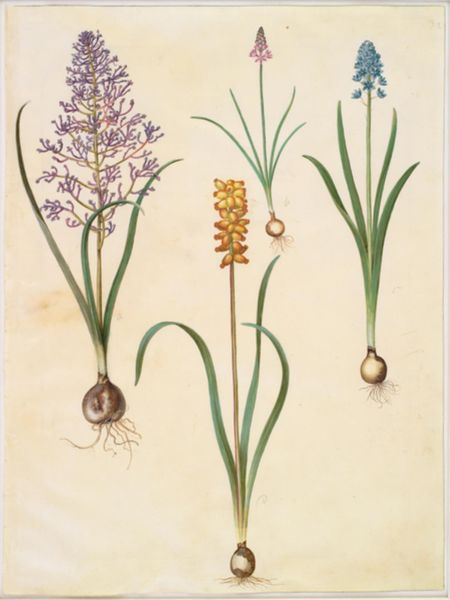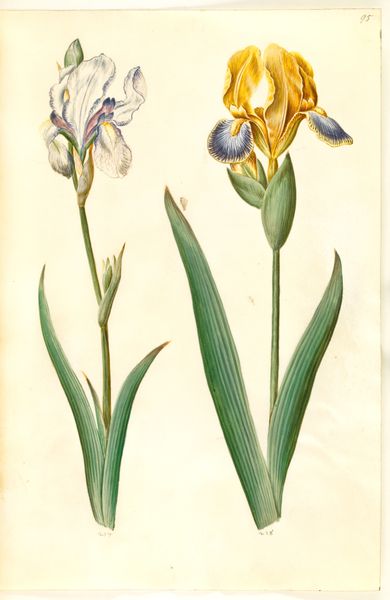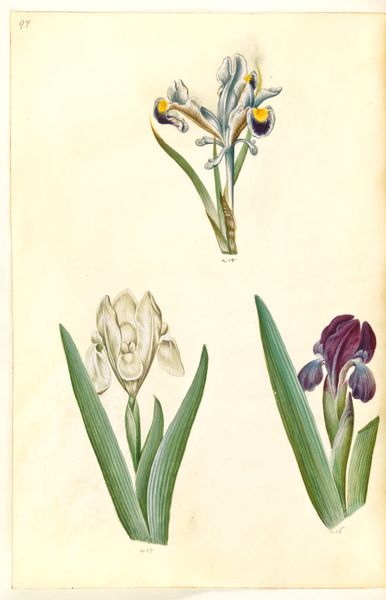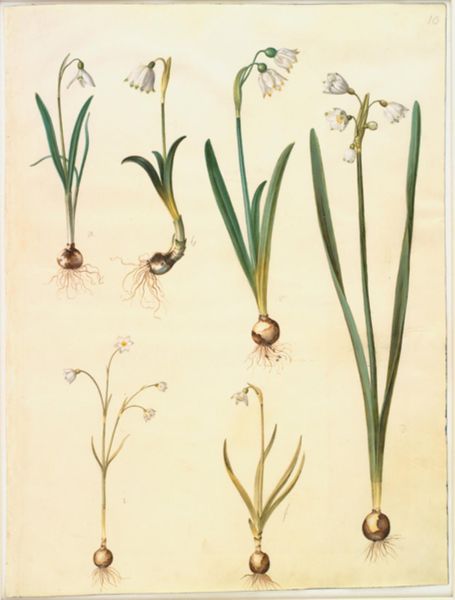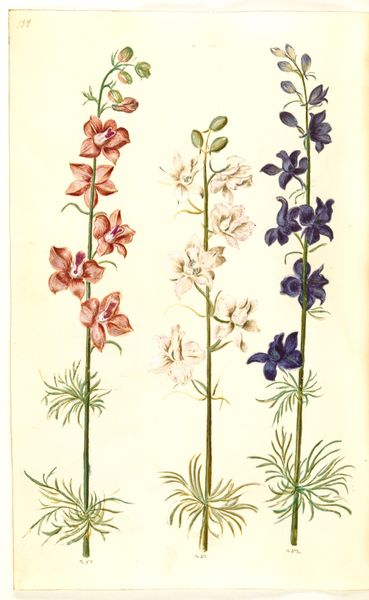
Muscari botryoides (almindelig perlehyacint) 1635 - 1664
0:00
0:00
drawing, gouache, watercolor
#
portrait
#
drawing
#
gouache
#
11_renaissance
#
watercolor
#
botanical drawing
Dimensions: 375 mm (height) x 265 mm (width) x 85 mm (depth) (monteringsmaal), 358 mm (height) x 250 mm (width) (bladmaal)
Editor: Here we have Hans Simon Holtzbecker's *Muscari botryoides*, or Common Grape Hyacinth, made sometime between 1635 and 1664. It’s rendered in watercolor and gouache. What strikes me is its delicate, almost scientific quality, reminding me of early botanical illustration. What do you see in this piece? Curator: What I find compelling is the intersection of science and art in the 17th century. These botanical drawings, seemingly objective, were often entangled with colonialism. Think about where these flowers were sourced. Were they endemic to the region, or transported? And who had access to such specimens? Editor: That's a perspective I hadn't considered. So, the act of documenting nature isn't always neutral? Curator: Precisely. It raises questions about power dynamics and the human relationship to the natural world. How does naming and categorizing influence our perception and treatment of nature, or, more broadly, people? Who benefits, and who is marginalized? Even something as seemingly innocuous as a flower painting can hold layers of political and social commentary, when considered through that lens. Editor: It's amazing how one artwork can open up so many different avenues of thought. It challenges the surface beauty. Curator: Exactly! The goal is to encourage deeper thinking, revealing the intricate connections between art, history, and contemporary society. By unearthing stories and challenging assumptions we promote a richer and more nuanced dialogue about who we are, where we have come from, and where we might be headed. Editor: I'll never look at botanical art the same way again! It shows me how vital it is to consider context. Curator: Precisely! I'm glad that looking together provided insight into how identity, race, and politics all interact.
Comments
No comments
Be the first to comment and join the conversation on the ultimate creative platform.
